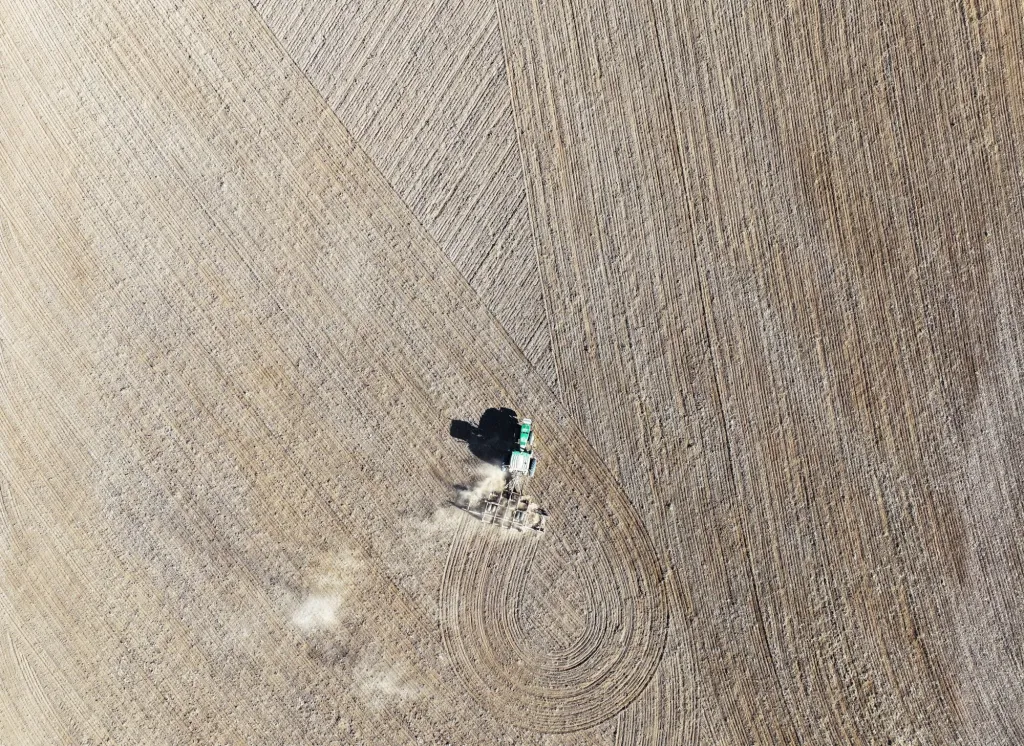Copyright Boulder Daily Camera

Negotiators tasked with hammering out the future of the shrinking Colorado River — and the 40 million people who rely on it — are once again careening toward a deadline imposed by federal authorities, with little progress to show publicly. Federal officials gave the seven states in the river basin a deadline that arrives Tuesday to present the concept for an agreement on how to share the river after 2026. Then they’d have until Feb. 14 to submit a detailed plan. The states’ negotiators have remained mum in the days before the deadline. The silence has followed outbursts of public sparring in recent months, giving onlookers little hope that a deal is imminent. Negotiators previously failed to meet a March 2024 deadline imposed by the Biden administration, instead submitting two separate proposals — one from the Lower Basin and one from the Upper Basin. Nothing will change immediately if the states don’t meet this week’s deadline, as management of the river and its two major reservoirs will continue under the current operating plan. But that plan is expiring at the end of 2026. Every week without an agreement makes a federally imposed plan and subsequent litigation more likely — an outcome that would bring uncertainty to the water supply relied upon by millions of people as well as a massive agricultural economy and the diverse ecosystems supported by the river. There’s no roadmap for exactly what might follow. “I see that as a lose-lose for both the Upper Basin and Lower Basin,” said Jennifer Gimbel, a senior water policy scholar at Colorado State University. For months, the closed-door negotiations have seemingly stalemated between the Upper Basin states — Colorado, Wyoming, Utah and New Mexico — and the Lower Basin states of Arizona, California and Nevada. While there are many technical details to any Colorado River plan, the fundamental question remains: How do the states divide up the water from a river that is providing less of it? Upper Basin negotiators say their water supplies are already cut every year, depending on snowpack, and that they’ve never used their full legal water allotment. Lower Basin states — which sit downstream of the river’s two massive reservoirs — say they have made significant water use cuts, and the pain of the shrinking river must be felt basinwide. A brief moment of seeming breakthrough in July later devolved into a spate of cross-basin, finger-pointing commentary in news outlets across the West. Most recently, Arizona’s governor on Wednesday called the Upper Basin states’ position “extreme” and blamed them for “running down the clock.” Colorado’s negotiator, Becky Mitchell, declined a request last week for an interview about the negotiations’ progress and potential impacts in Colorado if there is no deal between the states. “The Colorado River Basin States are focusing on negotiations,” Michael Elizabeth Sakas, a spokeswoman for the Colorado Department of Natural Resources, wrote in an email. “We will provide an update once there is one to provide.” A spokeswoman for the Department of the Interior — which oversees the federal Bureau of Reclamation — declined an interview request but said in a statement last week that officials remained focused on a seven-state agreement being reached. Department leaders were optimistic that the states could meet Tuesday’s deadline, spokeswoman Elizabeth Peace said. “Without consensus among all seven states, Interior’s management options would be more limited and less beneficial than what could be achieved through a collaborative approach,” she said. What happens if there is no deal? If Interior implements its own plan, that intervention could set off litigation between the states and the federal government or between the states, Gimbel said. Several plan concepts the Bureau of Reclamation presented publicly late last year would deliver large cuts in water supplies to the Lower Basin and also impact the Upper Basin reservoirs managed by the agency, like Blue Mesa Reservoir outside Gunnison. “Basically, no matter what Reclamation does, there is going to be litigation challenging whatever the plan is,” said Jim Lochhead, a former director of the state natural resources department who served for 20 years as Colorado’s representative on interstate Colorado River operations. “All of that puts the fate of the river out of the hands of the people who live in the basin and in the hands of the courts.” Litigation could prompt a judge to halt the implementation of the Bureau of Reclamation’s proposed plan. The court could then order that the river be managed under previous plans or create its own stopgap management plan — like uniform cuts across the entire basin — while legal proceedings continue, said Gage Zobell, a Utah-based water attorney with Dorsey and Whitney. Reverting to a prior management plan — like those from 2007 or 1960 — could lead to Lake Powell and Lake Mead being drained very quickly because they were not designed with the concept of long-term drought in mind, he said. “The problem is that courts aren’t experts,” Zobell said. “You risk them not fully understanding how to do it.” Both of the two largest reservoirs on the river — Lakes Powell and Mead — are only about a third full. Projections released by the bureau last month show that water levels at Lake Powell could drop so low by next September that water would no longer flow through the dam’s hydroelectric turbines. Any litigation over the river would take years and cost tens or hundreds of millions of dollars in legal fees, Lochhead said. That money could be better spent on finding long-term solutions to managing drought in the river basin, he said. Regardless of court outcomes, the uncertainty created by litigation alone would destabilize economies, Lochhead said. Water utilities across the basin rely on Colorado River water, including many Front Range cities and much of the state’s Western Slope. Companies looking to establish themselves in Denver — where 50% of drinking water is sourced from the Colorado River — would be more hesitant to do so if the long-term water supply is uncertain, said Lochhead, who also led Denver Water for 13 years, until 2023. Oil and gas companies, mining operators, farmers and manufacturers across the basin rely on a steady water supply — and thousands rely on those industries for work, Zobell said. “It’s easy to weigh in from the sidelines, and I’m not trying to cast aspersions,” Zobell said. “But I think what’s not being talked about is the real lives that are going to be implicated — you’re affecting millions of lives.” ‘A transparency desert’ The time crunch that would result from the lack of a deal this week would also shorten the amount of time for meaningful public input on the plan — and for federal regulators to take that input into account. “There’s still time if we don’t reach that Nov. 11 deadline, but that will become tighter and tighter,” Gimbel said. The development of the post-2026 plans is guided by the National Environmental Policy Act, which requires analysis of the environmental impacts of major projects and requires public comment. The Bureau of Reclamation formally began the process in June 2023 and completed the first step — mandatory solicitation of public comment about the range of issues that should be considered — in August of that year. The agency received more than 21,000 comments on the future management of the river. Reclamation in January published a report detailing five potential management plans. The agency’s next step under NEPA is to publish a draft environmental impact statement — a thorough analysis of the environmental impacts of each proposed plan. Federal law requires that the public have at least 45 days to submit comments on the draft document, which is likely to span hundreds of pages. Scott Cameron, then the acting assistant secretary for water and science at Interior, said at a conference in June that the bureau was on track to release a draft environmental impact statement by the end of 2025 — and then a final decision no later than the “very early summer” of next year. The agency wants to have a plan in place before Oct. 1, when the new water year begins. The water year follows the water cycle, beginning as winter snowpack starts to accumulate and ending Sept. 30, as irrigation seasons end and water supplies typically reach their lowest. After publishing the draft environmental impact statement, the bureau must consider the public comments it receives before publishing the final version of the EIS. That document kicks off a mandatory 30-day wait before the bureau can make a final choice, called a record of decision. Bureau of Reclamation officials have not publicly provided an update on an expected timeline beyond Cameron’s comments at the June conference. Peace, the Interior spokeswoman, did not respond to an email last week asking for a timeline for publication of the required documents. The bureau’s webpage on post-2026 planning has not been updated since Jan. 17, according to the site. Without any information from federal authorities or negotiators, the public is left in the dark, said Kyle Roerink, the executive director of the Great Basin Water Network. All that onlookers can do is surmise and pontificate about what appears to be a political snake den, he said. “It really borders on a dereliction of duty, as it relates to upholding the standards that the public should expect from regulators dealing with one of the most important resource issues in the southwest United States,” Roerink said. “The fact that we’ve been in a transparency desert is really troubling.”



